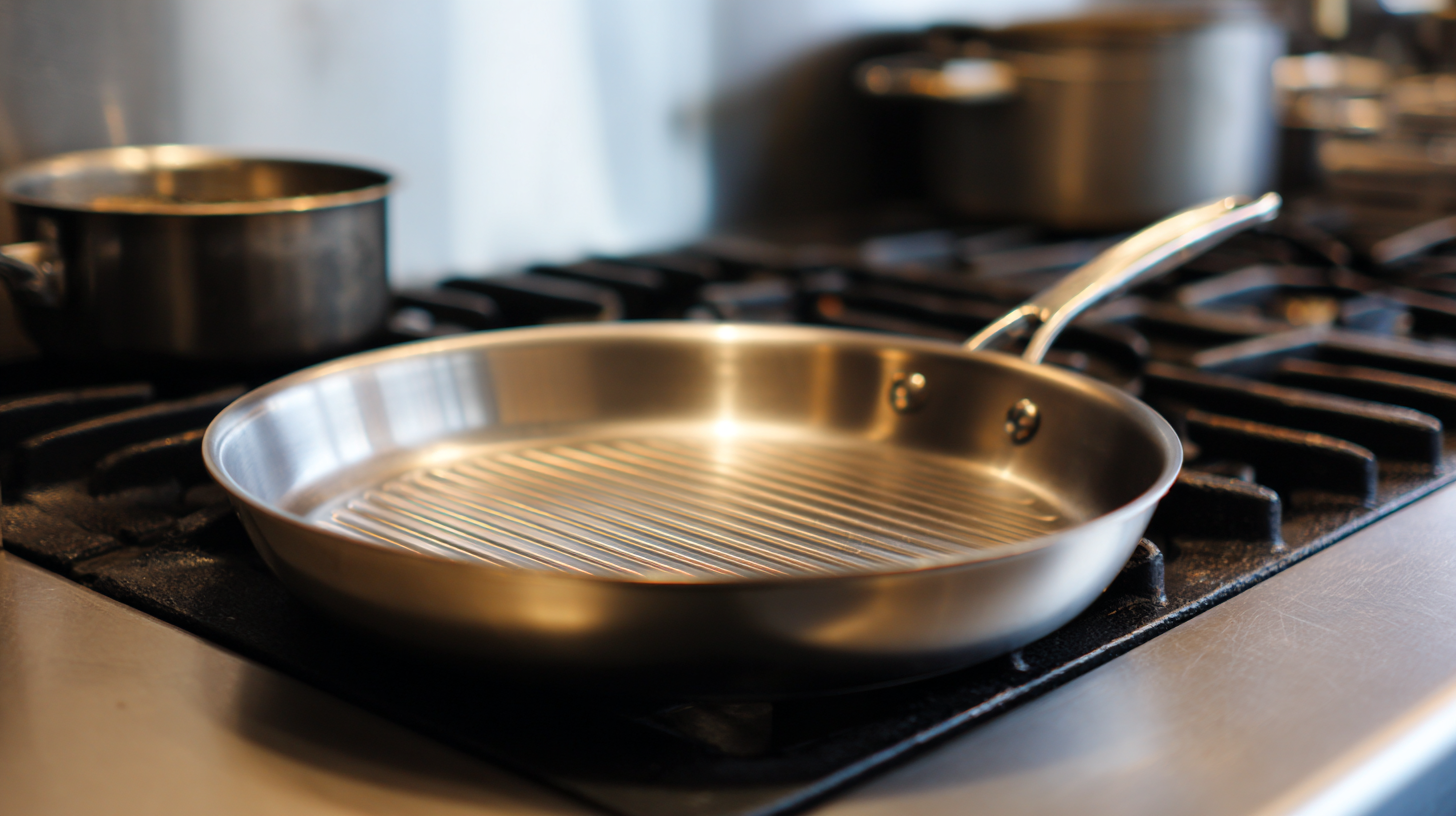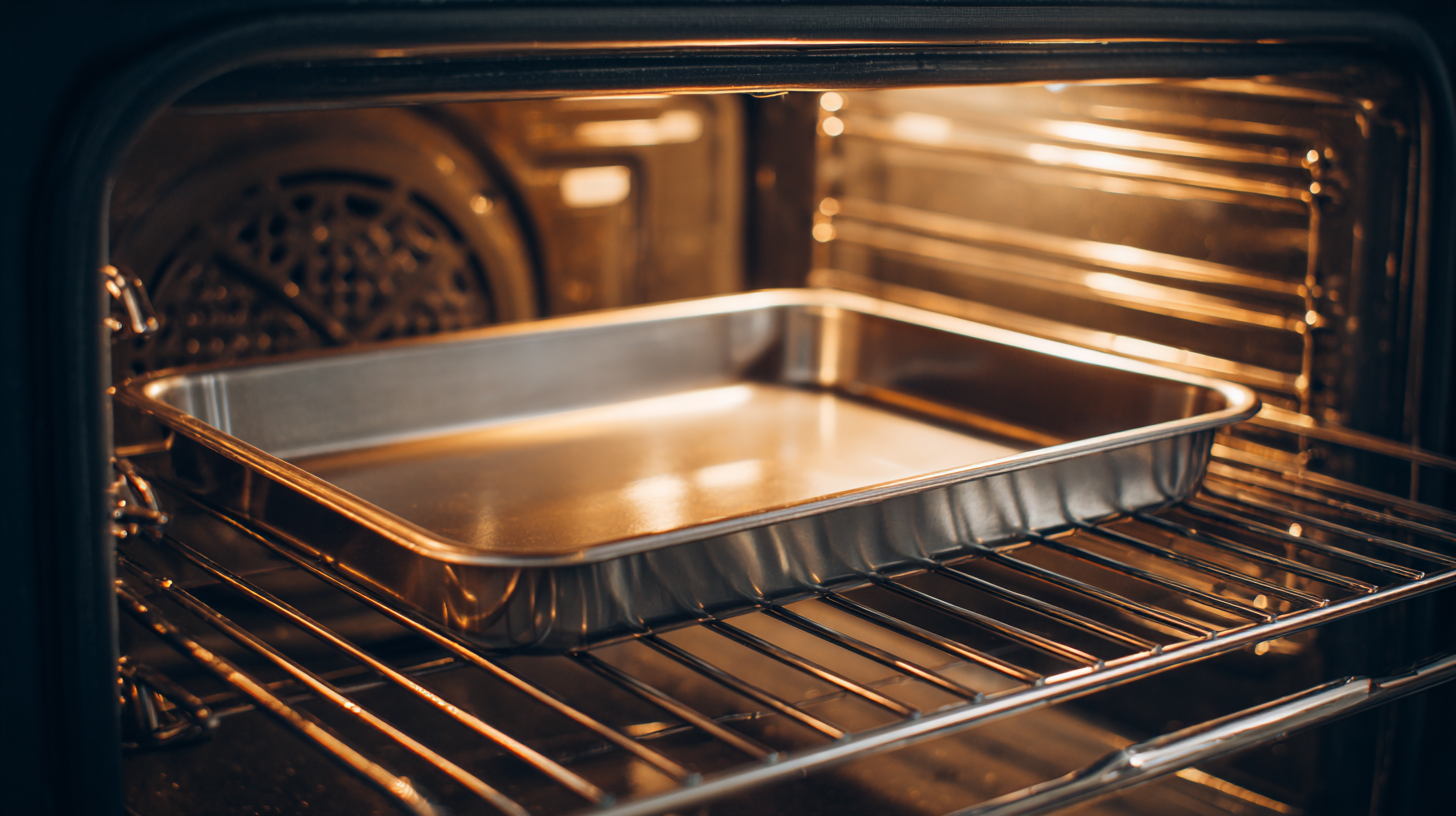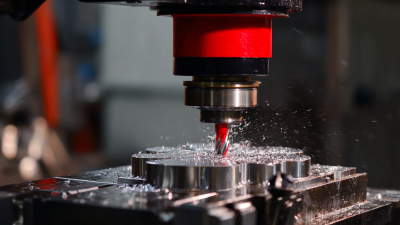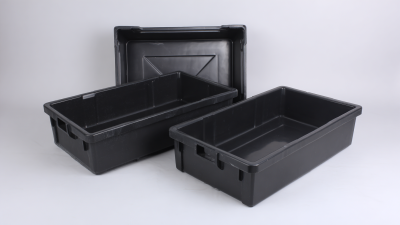Maximize Kitchen Cleanliness with the Ultimate Guide to Choosing a Large Drip Pan
In today’s culinary landscape, maintaining a clean and efficient kitchen is paramount, not only for food safety but also for enhancing the cooking experience. According to a recent report by the Food and Drug Administration (FDA), approximately 48 million people in the United States experience foodborne illnesses annually, with improper kitchen hygiene being a significant contributor. One crucial tool in optimizing kitchen cleanliness is the large drip pan. Designed to catch spills and drips from cooking appliances, these pans help contain messes that can lead to cross-contamination or even fires. Industry experts indicate that utilizing a large drip pan can reduce kitchen cleanup time by up to 30%, allowing chefs and home cooks alike to focus on what they love most—creating delicious meals. By understanding the importance of choosing the right large drip pan, kitchen enthusiasts can uphold high hygienic standards while ensuring their cooking spaces remain spotless.

Understanding the Importance of a Large Drip Pan for Kitchen Hygiene
In the pursuit of a cleaner and more hygienic kitchen, investing in a large drip pan can make a significant difference. According to a report from the National Sanitation Foundation, kitchens are often breeding grounds for bacteria, with surfaces in proximity to raw food potentially harboring 16 million bacteria per square inch. A well-chosen drip pan serves as a protective barrier, catching spills, grease, and food debris before they can accumulate and create unsanitary conditions.
Moreover, large drip pans are designed to hold greater volumes, offering more efficient cleanup and reducing the frequency of maintenance tasks. A study by the American Cleaning Institute found that kitchens maintained with proper drainage systems and protective equipment, like drip pans, can reduce contamination risks by up to 70%. This highlights that the size and quality of such tools play a crucial role in not only enhancing cleanliness but also in promoting overall kitchen hygiene. By prioritizing a large drip pan, homeowners can take a proactive step toward ensuring a safe and sanitary cooking environment.
Kitchen Cleanliness and Drip Pan Size Impact on Hygiene
Key Features to Consider When Selecting a Large Drip Pan
When selecting a large drip pan, several key features should be thoughtfully considered to ensure maximum kitchen cleanliness and efficiency. Firstly, the size and shape of the pan are crucial. A well-fitted drip pan will catch all spills and drips, preventing them from reaching your oven or stovetop. Measure the dimensions of your appliances to choose a pan that fits snugly without leaving gaps.
Material is another important factor; stainless steel and heavy-duty aluminum are excellent choices due to their durability and heat resistance. These materials are not only lightweight and easy to handle but also resist warping over time. Additionally, choosing a pan with raised edges can help contain liquids more effectively, reducing the risk of messes. Finally, consider ease of cleaning—look for pans that are dishwasher-safe or have non-stick surfaces to simplify maintenance and keep your kitchen spotless.

Comparing Material Options for Durability and Easy Cleaning
 When selecting a large drip pan, the choice of material plays a critical role in both durability and ease of cleaning. Common materials include stainless steel, aluminum, and enameled cast iron, each with distinct advantages. According to a report by the National Kitchen and Bath Association, stainless steel is favored for its resilience, resisting rust and corrosion while providing a sleek, contemporary aesthetic. Its non-porous surface ensures that spills and stains do not cling, making cleanup effortless—a feature that can save busy home cooks an average of 30 minutes per week in kitchen maintenance.
When selecting a large drip pan, the choice of material plays a critical role in both durability and ease of cleaning. Common materials include stainless steel, aluminum, and enameled cast iron, each with distinct advantages. According to a report by the National Kitchen and Bath Association, stainless steel is favored for its resilience, resisting rust and corrosion while providing a sleek, contemporary aesthetic. Its non-porous surface ensures that spills and stains do not cling, making cleanup effortless—a feature that can save busy home cooks an average of 30 minutes per week in kitchen maintenance.
On the other hand, aluminum drip pans are lightweight and conduct heat efficiently, which can be beneficial for those who cook frequently. However, while they are generally less expensive, they may not offer the same lifespan as stainless steel. A study from Consumer Reports indicates that while aluminum can tarnish over time, it is still preferred in certain settings due to its easy handling and affordability. For those seeking minimal upkeep, enameled cast iron provides a durable solution with a range of vibrant colors, though it requires careful cleaning to maintain its finish. Ultimately, evaluating these material properties is essential for maximizing kitchen cleanliness and functionality.
Tips for Proper Maintenance and Care of Your Drip Pan
When it comes to maintaining a pristine kitchen, the drip pan often goes unnoticed yet plays a crucial role in cleanliness. To ensure your drip pan remains in top condition, regular maintenance is essential. According to the American Cleaning Institute, kitchens can harbor over 3,000 harmful bacteria per square inch if not properly cleaned, making routine maintenance of components like the drip pan vital. Clean your drip pan weekly by soaking it in warm, soapy water and scrubbing any stubborn stains with a non-abrasive sponge.
Proper care extends beyond just cleaning; it also includes strategic placement and monitoring. The National Sanitation Foundation recommends checking for signs of wear or damage every few months, as a well-maintained drip pan can help prevent spills from reaching your kitchen floor, thus reducing the risk of slips and falls. Additionally, consider choosing a larger, high-quality drip pan made of stainless steel or enameled cast iron, as these materials provide greater durability and easier cleaning. With the right care and attention, your drip pan can significantly contribute to a cleaner, safer kitchen environment.
Common Mistakes to Avoid When Using a Large Drip Pan
When using a large drip pan in your kitchen, several common mistakes can undermine your efforts to maintain cleanliness. One major error is neglecting to choose the right size. A drip pan that is too small will overflow, leading to spills and potential messes on your stovetop. To avoid this, measure your stovetop grates and ensure you select a pan that adequately covers the area, catching every drop.
Another mistake is failing to clean the drip pan regularly. Allowing grease and food residue to accumulate not only creates an unappetizing sight but can also lead to smoking during cooking. Make it a habit to clean your drip pan after every few uses with soap and warm water. For tougher stains, a baking soda paste can work wonders.
Lastly, avoid using a drip pan solely for catching spills. While its primary function is to trap drips, it can also serve as a cooking tool. Utilizing your large drip pan as a roasting tray or for simmering sauces can enhance your cooking efficiency while reducing cleanup time. Embrace the versatility of this kitchen essential and elevate both your cooking and cleaning routines.
Related Posts
-

The Future of Sustainable Versatile Solutions with the Best Large Drip Pan in Global Markets
-

5 Reasons Why CNC Machine Tooling is Essential for Modern Manufacturing
-

Unmatched Quality in Plastic Spill Trays from China Leading the Global Market
-

Exploring Vacuum Forming Plastic Innovations at the 138th Canton Fair 2025: A Look into Industry Trends
-

The Future of Vacuum Forming Machine Technology: Innovations Transforming Manufacturing
-

Exploring Innovative Alternatives to Traditional Vacuum Molding Machine Solutions